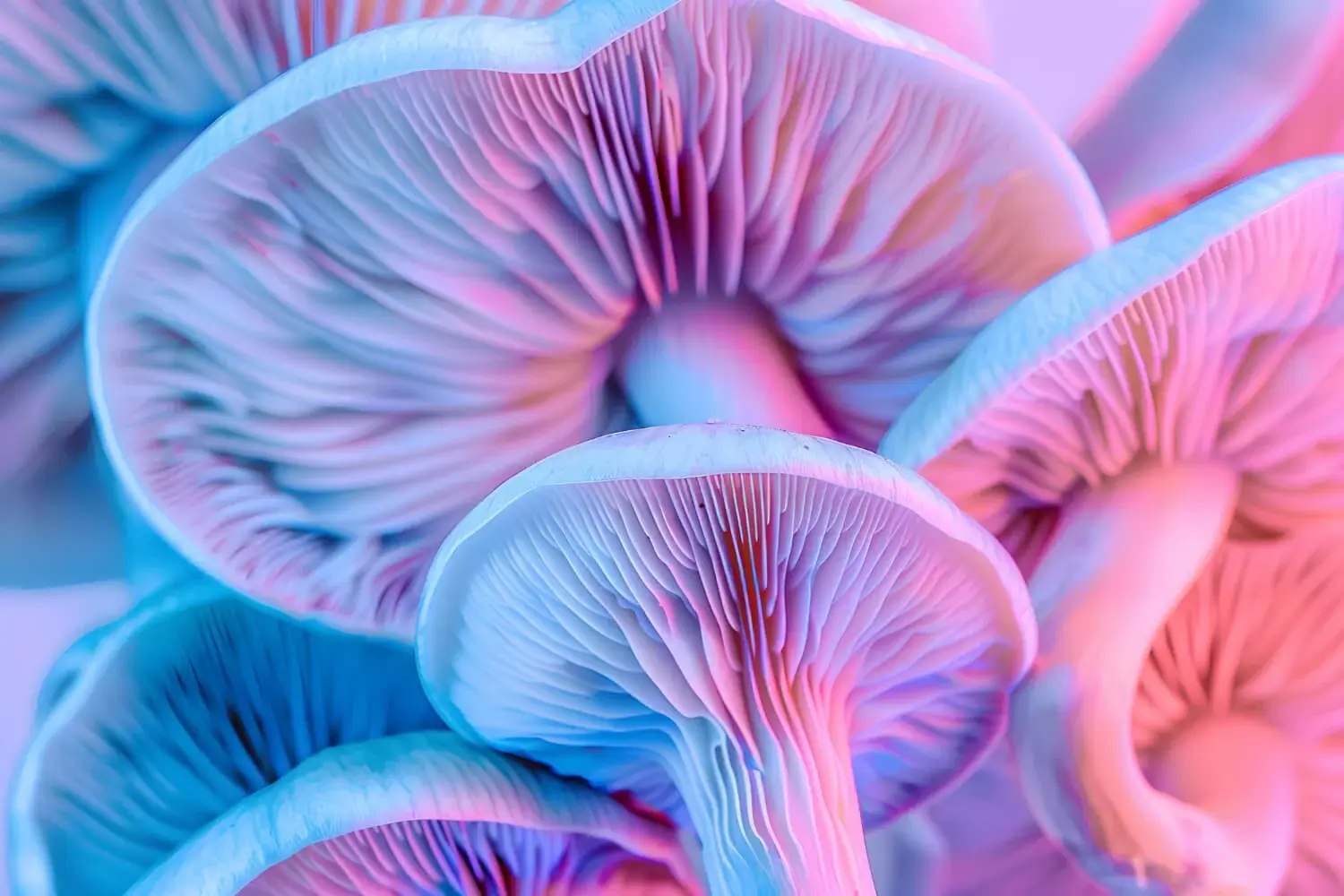An Introduction to Muscimol
As we discussed in a previous article, mushrooms have had multiple culinary, cultural, and medicinal uses throughout time. However, of particular interest in terms of their unique properties, are magic mushrooms. These are mushrooms that hold specific psychoactive properties, which can lead to altered states of consciousness. Muscimol is one of these psychoactive compounds that can be found in several species of mushrooms, most notably Amanita muscaria and Amanita pantherina. If anything, muscimol is one of the primary compounds that lead to the altered state of consciousness. As a result, the compound has been seen as a point of interest for recreational users, as well as scientific researchers. Muscimol’s history is rich with cultural and ritualistic significance. The earliest known use of muscimol comes from Siberian shamanistic traditions, where Amanita muscaria mushrooms were consumed for their psychoactive properties. These mushrooms were often used in spiritual and healing rituals, believed to facilitate communication with the spirit world.
The cultural impact of muscimol extends into contemporary times as well. In the 20th century, muscimol gained attention during the psychedelic movement, with explorers of consciousness seeking out Amanita muscaria as an alternative to more common psychedelics like LSD and psilocybin. The unique effects of muscimol, distinct from other psychedelics, attracted a niche group of psychonauts who were interested in the mushroom’s historical and ethnobotanical background. This ongoing interest has kept muscimol relevant in discussions about psychoactive substances and their role in human culture and consciousness exploration.
The Science Behind Muscimol
Muscimol is classified as a GABA A receptor agonist, meaning it binds to and activates these receptors in the brain, leading to its distinctive psychoactive effects. Muscimol’s chemical structure and function make it a unique substance among naturally occurring psychoactive compounds. When people consume these mushrooms, a substance called ibotenic acid in the mushrooms is converted into muscimol, which is the main compound responsible for the mushrooms’ mind-altering effects. This conversion is important because ibotenic acid can be harmful to the brain, while muscimol is safer. To make the mushrooms safer to consume, people often dry them, which helps increase the amount of muscimol and reduce the ibotenic acid.
Muscimol works by interacting with specific receptors in the brain called GABA_A receptors. These receptors are part of the GABA system, which is crucial for controlling brain activity. GABA (gamma-aminobutyric acid) is a chemical that helps calm down the brain’s activity. When muscimol binds to these receptors, it enhances the calming effects of GABA, leading to reduced brain activity. This action explains why muscimol can make people feel relaxed, sleepy, and even help with muscle relaxation. This is different from other well-known psychedelics like psilocybin (found in magic mushrooms) or LSD, which mainly affect serotonin receptors instead of GABA receptors.
Muscimol’s interaction with the GABA system not only makes people feel relaxed but also affects other bodily functions. For example, the GABA system is involved in regulating sleep, anxiety, and muscle control. Because of this, muscimol can influence sleep patterns, making people feel like they are in a dream-like state or experiencing vivid, hypnagogic (between sleep and wakefulness) experiences. It can also cause muscle relaxation, which might lead to unsteady movements or motor impairment when the substance is at its peak effect. Understanding these effects helps us appreciate the diverse impacts of muscimol and its potential therapeutic uses.
Modern scientific interest in muscimol has grown, focusing on its potential therapeutic benefits. Some promising areas of research include:
- Neurological Disorders:
- Researchers are investigating muscimol’s effects on neurological conditions such as epilepsy and Parkinson’s disease due to its action on the GABA system.
- Mental Health:
- Studies are exploring muscimol’s potential for treating anxiety, depression, and other mental health disorders.
- Sleep Disorders:
- Muscimol’s sedative properties make it a candidate for research into treatments for insomnia and other sleep disorders.
How does Muscimol Feel?
When ingested, muscimol can produce a wide range of effects that vary based on the dosage and individual sensitivity. Common effects include:
- Sedation and Relaxation:
- Many users report a profound sense of relaxation and a desire to rest or sleep.
- Altered Perception:
- Visual and auditory hallucinations are frequent, often described as dream-like or surreal.
- Euphoria and Emotional Changes:
- Users may experience heightened emotions, ranging from euphoria to anxiety or confusion.
- Motor Impairment:
- Muscimol can affect coordination and movement, sometimes causing muscle twitches or ataxia.
- Distorted Sense of Time:
- Time perception can be significantly altered, with minutes feeling like hours or vice versa.
What can we Expect from Muscimol?
In recent years, there has been a renewed interest in exploring the potential medical uses of muscimol. Scientists are studying how muscimol might help treat neurological and psychiatric conditions, particularly those involving problems with the GABA system, such as epilepsy, anxiety disorders, and insomnia. Early research suggests that muscimol’s ability to enhance GABA’s calming effects could help restore balance in brain activity, potentially relieving symptoms of these conditions.
Beyond potential medical treatments, researchers are also interested in using muscimol to learn more about how the brain works. Since muscimol can modulate GABA signalling, it provides a valuable tool for studying inhibitory processes in the brain. By observing how muscimol affects neural circuits, scientists can gain insights into the broader role of the GABA system in maintaining mental and emotional health. This research is especially relevant for developing new treatments for mental health disorders, where disruptions in inhibitory signalling often play a key role.
Additionally, advancements in technology and synthetic biology are paving the way for developing safer and more controlled versions of muscimol. These new analogues could retain the beneficial properties of muscimol while minimizing unwanted side effects, such as confusion and motor impairment. Innovations like these could make muscimol-based therapies more practical and acceptable for clinical use. Moreover, producing synthetic muscimol analogues could ensure consistent dosing and purity, addressing one of the significant challenges associated with natural sources of the compound.
Dosing muscimol requires careful consideration due to its potency and the variability in mushroom concentration. Here are some general guidelines:
- Start Low:
- Beginners should start with a low dose, around 5-10 milligrams, to gauge their sensitivity.
- Increase Gradually:
- Gradually increase the dose in small increments to avoid overwhelming effects.
- Measure Accurately:
- Use a precise scale to measure muscimol doses accurately.
- Consider Set and Setting:
- Use muscimol in a safe, comfortable environment with trusted individuals present.
FAQ
What is the typical dosage for muscimol?
The dosage of muscimol can vary significantly depending on the mushroom species and individual tolerance. However, a common starting dose is around 10-15 milligrams for mild effects, with 20-30 milligrams producing stronger, more hallucinogenic effects. It is crucial to approach dosing with caution due to the variability in individual responses and mushroom potency.
Is muscimol safe to use?
While muscimol has a long history of use, it is not without risks. The effects can be unpredictable depending on a person’s emotional state, much like cannabis and other cannabinoids. At extremely high doses it can lead to unpleasant experiences such as confusion, agitation, and other negative outcomes. It is essential to source muscimol from reputable suppliers and to use it in a controlled, safe environment.
How long do the effects of muscimol last?
The effects of muscimol typically onset within 30 to 90 minutes of ingestion and can last for 6 to 10 hours, with residual effects potentially lingering into the next day.
Can muscimol be detected in drug tests?
Standard drug tests do not usually screen for muscimol. However, specialized tests could potentially detect it if specifically targeted.
Are there any therapeutic uses for muscimol?
While not widely recognized in conventional medicine, some researchers are exploring the potential therapeutic applications of muscimol for conditions such as anxiety, depression, and insomnia due to its effects on the GABA system.


